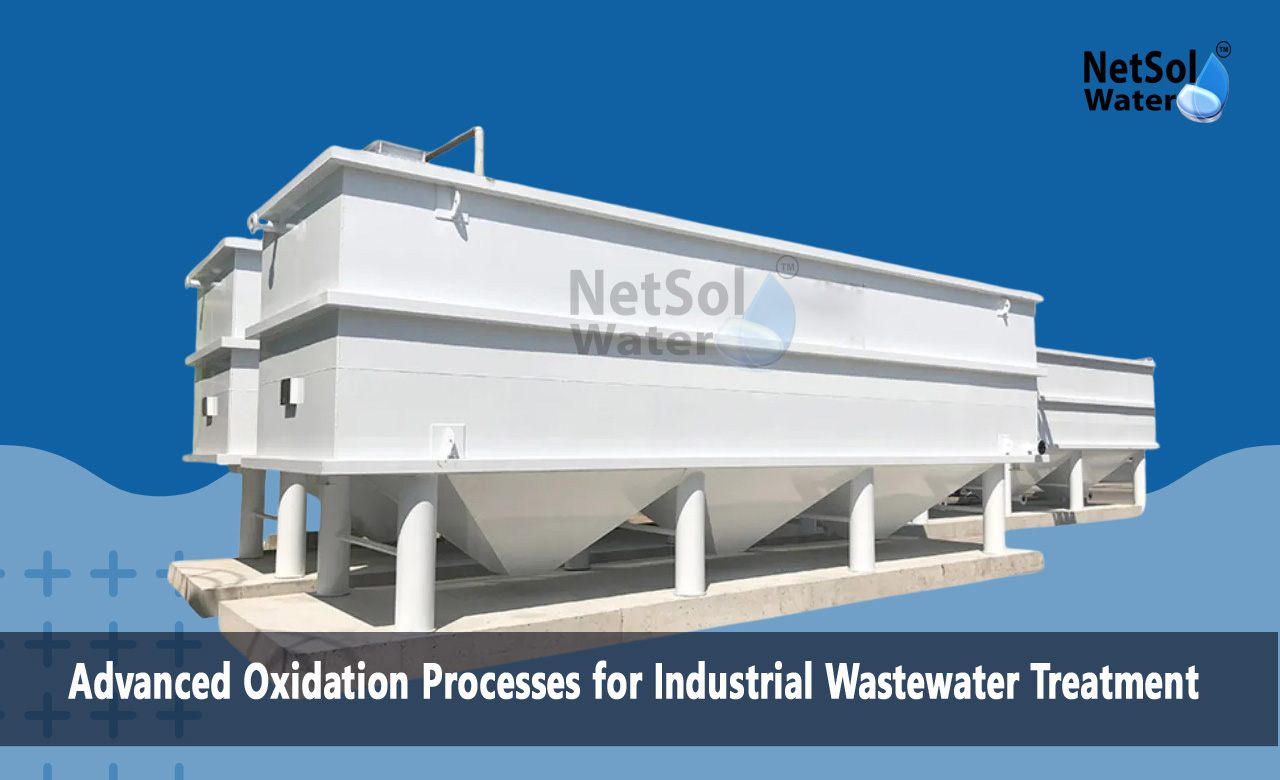Advanced Oxidation Processes (AOPs) for Industrial Wastewater Treatment
Industrial wastewater can contain many hard-to-remove organic compounds. It can include dyes phenols, pesticides and odour-causing agents. These substances can harm the environment and human health if untreated. Advanced Oxidation Processes or AOPs use powerful oxidants to degrade these pollutants. This method can break down complex chemicals into harmless end products. It can complement conventional methods that may not handle all pollutant types. Netsol Water is a leading effluent treatment plant manufacture that offers custom AOP solutions for industries such as textile, chemical and pharmaceutical. The company applies UV ozone and peroxide based processes in its designs. These processes can work alone or with other treatment steps.
Mechanisms of Advanced Oxidation Processes
Understanding how AOP works can help in selecting the best approach. It can show how oxidants form free radicals. These radicals then attack target pollutants and destroy their structure. This insight can guide system settings for higher removal efficiency. Let us have a look at some key reaction mechanisms
Hydroxyl Radical Generation: Hydroxyl radicals can form when the system uses hydrogen peroxide ozone or UV light. These radicals have very high oxidation power. They can break chemical bonds in hard to degrade contaminants. This process needs a proper pH range. It also needs suitable temperature.
Photocatalytic Reaction: A photocatalytic reaction uses a material such as titanium dioxide. UV light can excite the surface and produce radicals. These radicals then attack pollutant molecules on contact.
Ozone Decomposition: Ozone can break down in water to form radicals. This reaction can target many organic chemicals. It can remove compounds that resist other methods.
Types of AOP Techniques
Next selecting the right AOP method can affect efficiency cost and ease of operation. Different techniques offer unique benefits for varied wastewater streams. Netsol Water as an effluent treatment plant manufacturer offers systems based on these methods. Let us have a look at some common AOP approaches
UV/Hydrogen Peroxide Process: This process uses UV light and hydrogen peroxide. The UV energy activates peroxide to create hydroxyl radicals. These radicals can break down organic compounds quickly. The method can work well for clear water with low turbidity.
Fenton Process: The Fenton process uses iron salts and hydrogen peroxide. The reaction under acidic conditions creates hydroxyl radicals. This method can work well for wastewater with high organic load. Operators can adjust the iron dose to control reaction rate.
Ozone Based Process: This setup injects ozone into wastewater under controlled conditions. Ozone itself can degrade some pollutants and can also form radicals. The process can handle colored or odorous wastewater. It can link with other treatments for best results.
Photo Fenton Process: The photo Fenton process adds UV light to the Fenton reaction. Light can boost radical production and speed up pollutant breakdown. This method can improve removal of recalcitrant compounds. It can work well in plants with UV units.
Design Considerations for Industrial Scale
Then effective AOP design must match flow rates pollutant loads and site constraints. Good design can cut energy use and boost removal. It can also simplify plant operation and cut maintenance needs. Let us have a look at some key design factors
Reactor Configuration: Engineers can choose batch or continuous flow reactors. Batch models can allow flexible operation and easier control. Continuous flow models can serve high volume streams. The layout can include UV reactors ozone contact chambers or combined units.
Reaction Time: Reaction time can impact pollutant removal and cost. Longer time can improve removal but can need larger tanks. Shorter time can reduce footprint but can need higher energy input. Designers find a balance based on site needs.
Dosage Control: Accurate dosing of oxidants can improve efficiency and cut waste. Flow sensors and automatic controls can help match dose to load. Proper calibration can avoid low removal or excess chemical use. Systems can log data for future adjustment.
Conclusion
Advanced Oxidation Processes can play a key role in industrial wastewater treatment. Netsol Water can help design and deliver these systems. The company can serve as an effluent treatment plant manufacturer for many industries and guide each client from planning through start up. Contact Netsol Water today to learn more about AOP options. Reach out for a detailed assessment of your wastewater stream. Request a consultation with this effluent treatment plant manufacturer and improve your wastewater performance.
Contact Netsol Water at:
Phone: +91-9650608473, Email: enquiry@netsolwater.com



